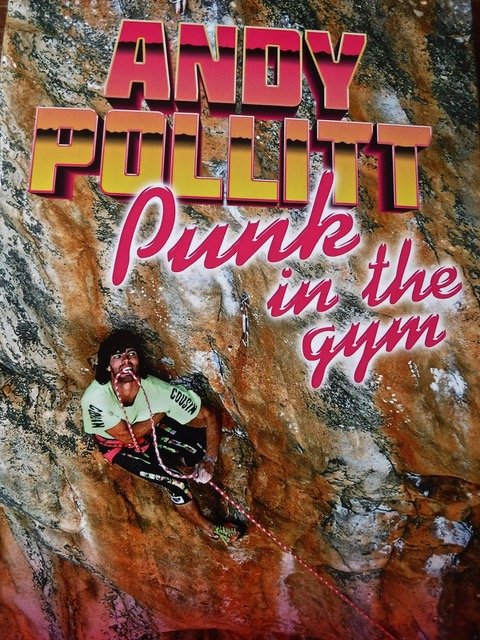Boardman Tasker Award 2019
© Henry Iddon
Festival Opening Night 2015
Back in 2015, Kendal Mountain Festival had its grand opening in the high street. We had a huge pop-up screen set up right in front of the Town Hall. Hundreds of people were gathered, kids on foam mats at the front, and row upon row of expectant faces receding into the gloom as the music pumped and the excitement mounted.
It was my role as presenter and “Face of the Fest” to get up on stage and kick the whole show off. I’d always have butterflies as the trailer played and I got ready to set the tone for the Festival. That year, the sound feed for the very first film dropped out, so I had to jump back up on stage and ad-lib while the tech crew worked their magic. I talked utter nonsense: my recent climbing trip to Kalymnos, the cut of my trousers, my favourite type of bouldering moves… it seemed like an age but was probably only a couple of minutes.
Coming off stage, Festival Director Steve Scott came up to me and said “What on earth was that bollocks you were spouting? It was brilliant. Janet Dean from the BT asks if you can do something for the Boardman Tasker next year”. And the rest (to use a cliché that’s as well-worn as the routes above the Catwalk at Malham) is history.
The brief from the Boardman Tasker team was pretty broad – just get everyone relaxed – the short-listed authors, the judges, Steve Venables (yes - even the Central Scrutiniser can get stage butterflies) and above all the audience. One of my guiding principles of presenting is to get plenty of audience interaction and I’ve been lucky to know some of the protagonists personally. Sir Chris B is always there, as is Dennis Gray. Graham Desroy was chief judge one year, and shortlisted authors have included my friends Mick Fowler, Nick Bullock and Victor Saunders. Tony Howard and Di Taylor are always in the room and after many years of doing the gig I’m proud to count Janet and Steve Dean and the wonderfully dedicated Martin Wragg among my friends as well.
When I first started thinking about how I should set the tone for the event, there were two main themes:
1. Point out that mountain literature has lots of other channels than books.
We can’t have the literati taking themselves too seriously. And
2. Make it light-hearted, irreverent and funny.
Here’s my notes from the inaugural address in 2016:
Each year, I’ve trawled the seabed of my brain for different ways with words to express what mountains mean to us as a community. I’ve used sources as diverse as poetry and guidebook iconography. I especially enjoyed using descriptions of mountains in children’s books, specifically The Hobbit and Winnie The Pooh. One of the biggest laughs I’ve ever had from the audience was when Christopher Robin and Winnie the Pooh have the following exchange while hunting for the North Pole:
"We are all going on an Expedition," said Christopher Robin.
"Going on an Expotition?" said Pooh eagerly. "I don't think I've ever been on one of those. Where are we going to on this Expotition?"
"Expedition, silly old Bear. It's got an 'x' in it."
"Oh!" said Pooh. "I know." But he didn't really.
"We're going to discover the North Pole."
"Oh!" said Pooh again. "What is the North Pole?" he asked.
"It's just a thing you discover," said Christopher Robin carelessly, not being quite sure himself.
"Oh! I see," said Pooh. "Are bears any good at discovering it?"
"Of course they are. And Rabbit and Kanga and all of you. It's an Expedition. That's what an Expedition means. A long line of everybody.”
A gale of laughter went round the Malt Room (phew, thinks Andy. Result!).
The last line clearly resonated with quite a few folk in the Malt Room.
Initially I was quite cautious, wanting to ensure I did Pete and Joe (and the Award) justice. As the gigs went by, I felt I could push the envelope a little more. One year we had a live quiz to identify the mountain related song lyrics, where the audience had to guess the song titles from a sound bite, after which we’d play the extract. Here they are again for your delectation and delight. No cheating by referring to Google:
You say the hill's too steep to climb
Climb it.
You say you'd like to see me try
Climbing.
You pick the place
and I'll choose the time
And I'll climb
The hill in my own way.
Just wait a while
for the right day.
Pretty easy that one…
Now try this for size.
Amusing belly dancers
Distract me from my wine
Across Tibetan mountains
Are memories of mine
I've stood some ghostly moments
With natives in the hills
Recording here on paper
My chills and thrills and spills
One culturally attuned audience member got it before we played the clip.
Hats off to that man, whoever you are.
I was particularly pleased to use that last line, as BT shortlisted authors often spend time in the hills and record on paper their chills and thrills and spills. These lyrics are followed by a banging 70’s rock guitar solo which fades to a pulsing drumbeat. Welcoming a besuited Martin Wragg to the stage, waving my arms around like Kermit the Frog on the Muppet Show was one of the dafter moments in my Kendal career.
Music has a real power to raise emotion and set a tone.
Just a few days before the 2019 festival, the innovative and inspirational climber (and BT shortlisted author) Andy Pollitt had died suddenly with a cerebral aneurysm.
His friend Steve Dean asked me to say a few words before we kicked off the second half when the award gets announced. It can be quite hard to get people to take their seats as they’re often in white-wine-fuelled conversation with friends. This time it was easy: the cover of Andy’s book “Punk in the Gym” appeared on screen, accompanied by a very loud 60 seconds of Joan Jett’s version of “Let’s Do It”. Everyone was firmly sat down as the last chord crashed. I stood up and said:
“Ladies and gentlemen. The Punk has left the Gym. A minute’s silence would be inappropriate”.
It’s one of my finer lines, and I like to think that Pollitt would have approved.
Similarly, I’d like to think that the spirits of Pete and Joe, borne by the jet stream from the north-north-east ridge of Everest, swept round the world, up Kendal High Street and into the Brewery Arts Centre, would stand at the back of the Malt Room and grin quietly. It’s been a real privilege to try and do them justice each year, and a pleasure bringing the event to Kendal.
When the BT moved to an online event in the aftermath of Covid, I had the challenge of maintaining the same principles of tone but without the audience interaction. The bonus was that I’d be “presenting” at home in Chamonix rather than in the darkness of the Malt Room, and that gave some location opportunities and source of inspiration. My first broadcast was from the foot of the boulder in Snell’s field, and 2021’s BT intro used steep skiing as a metaphor for writing books.
I retired from my position as presenter coordinator at KMF after the 2021 Festival, and when the tribe gathers in Kendal on the 19th November, I’ll be on a flight to Antarctica.
Meanwhile, my thanks to the Boardman Tasker Award for Mountain Literature team for all their hard work in bringing it to the public, the authors for their creativity and inspiring us to do more, and to you the audience for tolerating my irreverence each year. 2023 is of course forty years since the first Boardman Tasker Award for Mountain Literature. Here’s to many more!
Cheers. 🍻
Andy P
Chamonix
September 2022


































